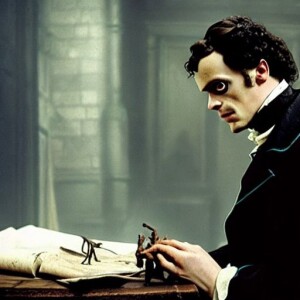In the realm of literary imagination, Mary Shelley introduced us to a captivating and enduring character known as Frankenstein. This iconic figure, brought to life in her groundbreaking novel “Frankenstein; or, The Modern Prometheus” in 1818, has since become a symbol of intrigue and caution.
At the heart of Shelley’s masterpiece is Victor Frankenstein, a brilliant young scientist who becomes consumed by a radical idea: the creation of life itself. Driven by unyielding ambition and an insatiable thirst for knowledge, Frankenstein delves into the depths of scientific experimentation. Through a combination of ingenious methods, he accomplishes the impossible and breathes life into a creature.
However, the sight that greets Frankenstein is far from what he anticipated. Horrified by the grotesque appearance of his creation, he recoils in fear and disgust, abandoning the hapless being in a world that rejects it. This forsaken creature, lacking a name of its own, embarks on a treacherous path of vengeance, relentlessly pursuing Frankenstein with a single-minded determination to destroy his creator’s life.
Beyond the pages of the novel, the character of Frankenstein serves as an enduring cautionary tale. It warns us of the perils that lie within unchecked ambition, the ethical dilemmas that arise from scientific progress, and the profound consequences of playing God. Throughout the narrative, Frankenstein grapples with the moral implications of his actions, haunted by an overwhelming guilt as he witnesses the devastating aftermath of his creation.
Shelley’s masterwork has transcended the realm of literature, morphing into a cultural phenomenon that has captivated audiences across generations. Its profound impact is evident in the countless adaptations it has inspired, from spine-tingling films to captivating stage productions. “Frankenstein” has firmly etched its place in both literary history and popular culture, a testament to its timeless power to enthrall and provoke contemplation.

